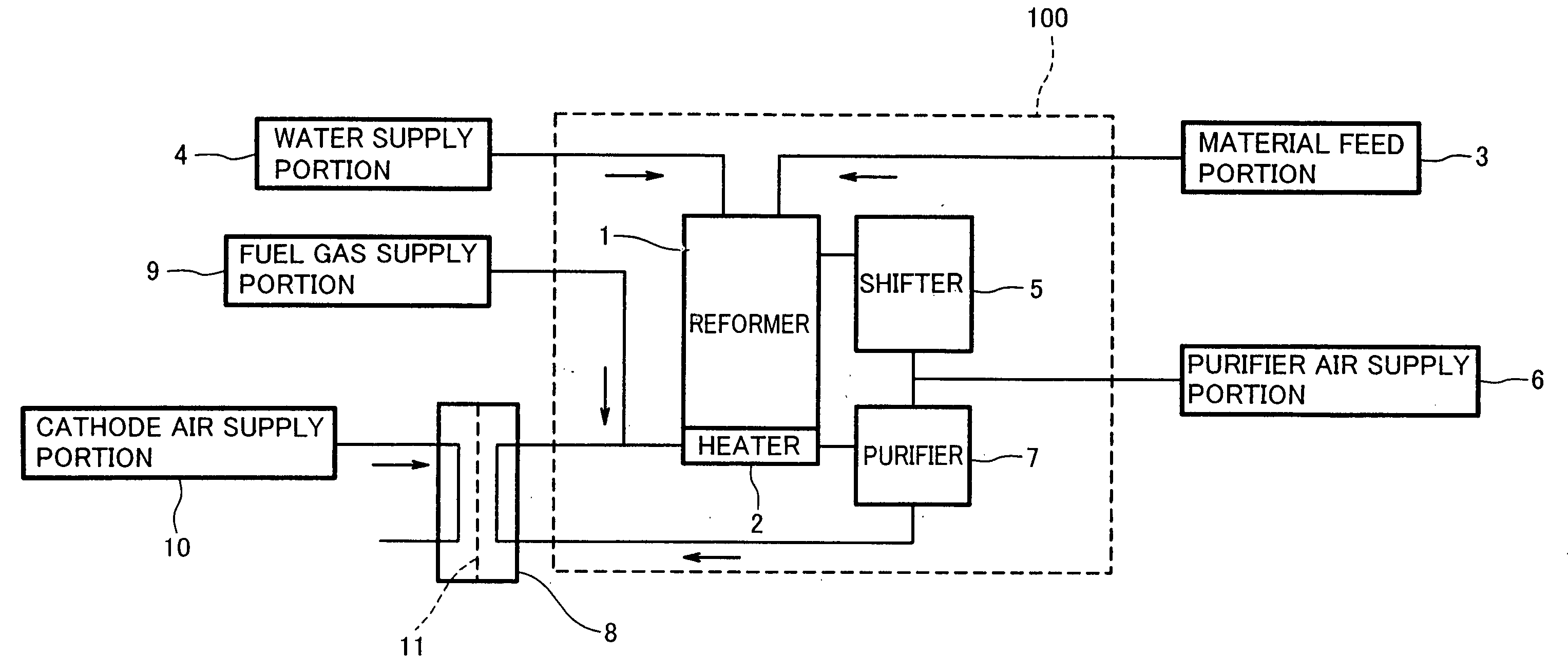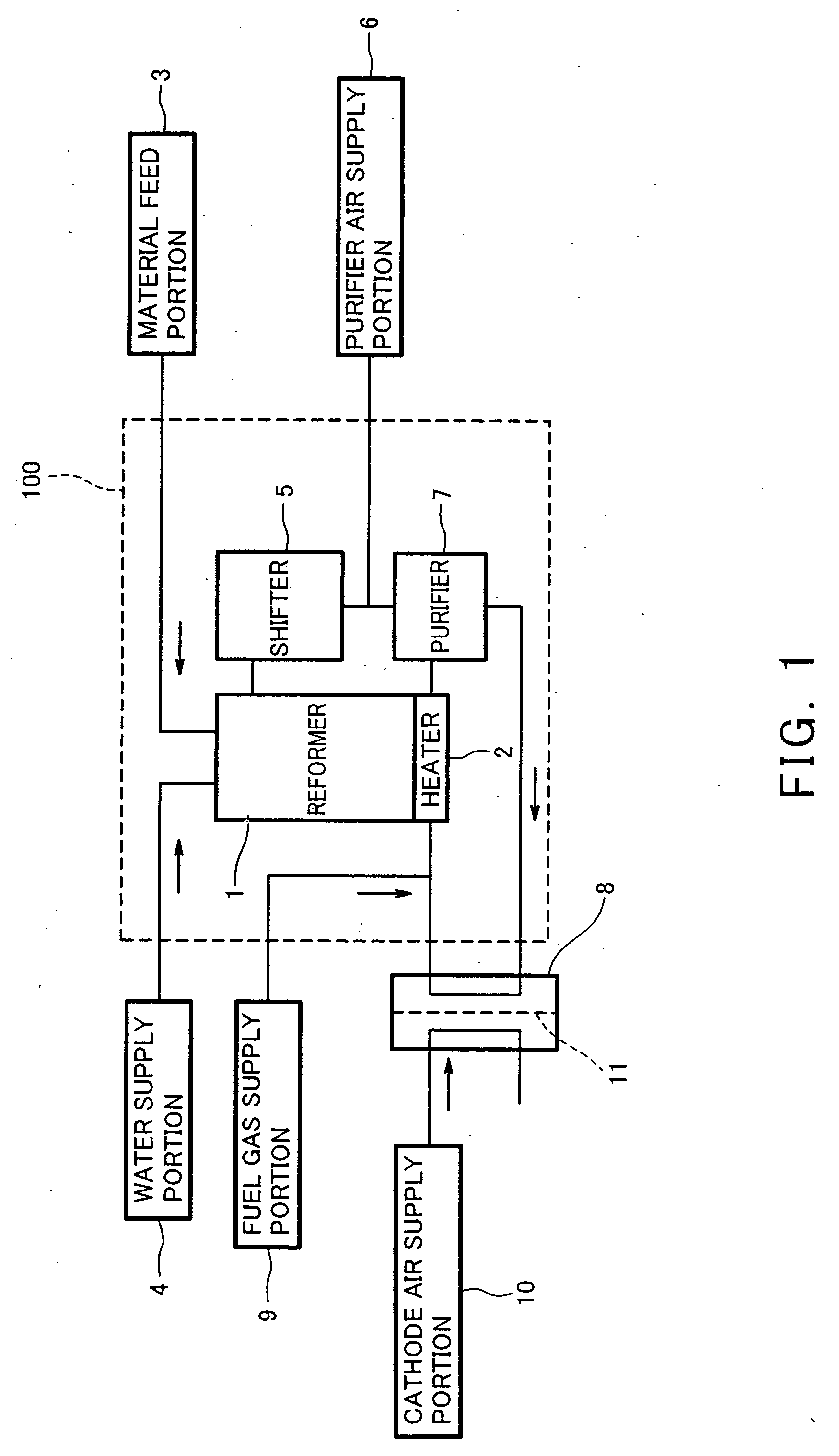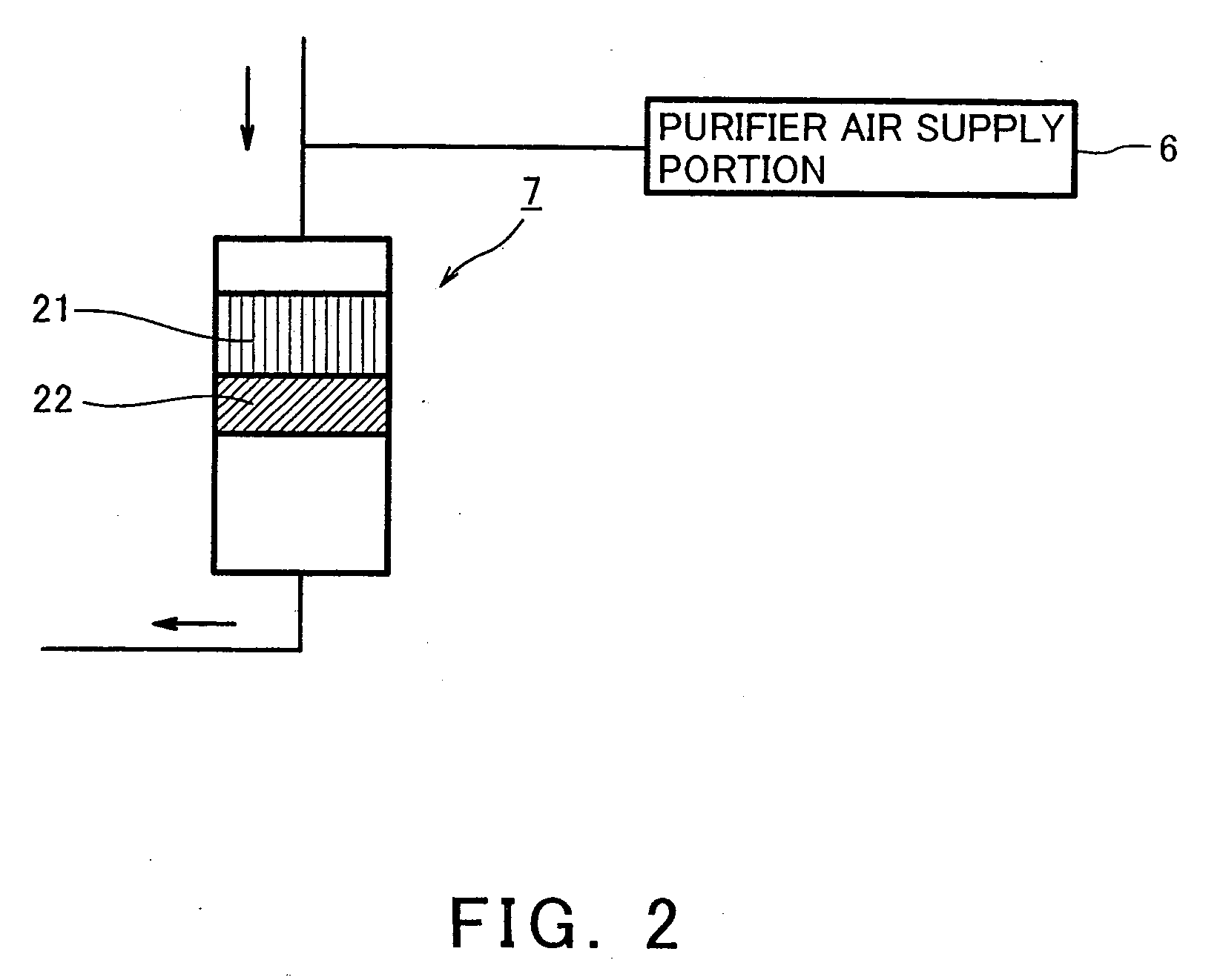Hydrogen generator and fuel cell system
a fuel cell and hydrogen generator technology, applied in electrochemical generators, sustainable manufacturing/processing, separation processes, etc., can solve the problems of significant reducing the power generation efficiency of the fuel cell, difficult to progress oxidization reaction, and poisoned platinum (pt) based catalyst used as an electrode of the fuel cell
- Summary
- Abstract
- Description
- Claims
- Application Information
AI Technical Summary
Benefits of technology
Problems solved by technology
Method used
Image
Examples
example 1-2
[0084] In this embodiment, the oxygen removing catalyst body 22 was produced using each of ceria and iron oxide as a carrier, instead of the ceria-zirconia complex oxide. And, the hydrogen generator 100 was operated as in the example 1, and the start time was measured. As a result, the start time was 22 minutes.
[0085] As should be appreciated from the above, when using ceria or iron oxide as a carrier of the oxygen removing catalyst body 22, the start time can be reduced as in the case of using the ceria-zirconia complex oxide.
embodiment 2
[0086] (Embodiment 2)
[0087] A hydrogen generator according to a second embodiment of the present invention is constructed such that a CO methanation catalyst body is provided downstream of the oxygen removing catalyst body within the purifier. Since the other construction is identical to that of the first embodiment, its description is omitted.
[0088] FIG. 5 is a cross-sectional view schematically showing a construction of the purifier of the hydrogen generator according to the second embodiment of the present invention. With reference to FIGS. 1 and 5, the purifier 7 is cylindrical, and the CO selective oxidization catalyst body 21, the oxygen removing catalyst body 22, and the CO methanation catalyst body 23 are arranged in this order within the purifier from upstream side. The CO methanation catalyst body 23 has a function of removing CO in the reformed gas by converting CO and hydrogen into methane. Here, the CO methanation catalyst body 23 may be structured such that Ru carried ...
example 2
(Example 2)
[0096] Ru was carried on alumina at an amount of 1 wt-%, and the alumina carrying Ru thereon was calcined at 300.degree. C. in air. Alumina sol and pure water were added to the alumina and made into a slurry, which was coated on a cordierite honeycomb, thus producing the CO methanation catalyst body 23. The CO selective oxidization catalyst body 21 and the oxygen removing catalyst body 22 were produced as in the example 1.
[0097] The hydrogen generator 100 constructed as described above was operated as in the example 1, and start time was measured. The measurement was 29 minutes. And, the temperature of the CO methanation catalyst body 23 was 200.degree. C.
PUM
| Property | Measurement | Unit |
|---|---|---|
| temperatures | aaaaa | aaaaa |
| temperature | aaaaa | aaaaa |
| molar ratio | aaaaa | aaaaa |
Abstract
Description
Claims
Application Information
 Login to View More
Login to View More - R&D
- Intellectual Property
- Life Sciences
- Materials
- Tech Scout
- Unparalleled Data Quality
- Higher Quality Content
- 60% Fewer Hallucinations
Browse by: Latest US Patents, China's latest patents, Technical Efficacy Thesaurus, Application Domain, Technology Topic, Popular Technical Reports.
© 2025 PatSnap. All rights reserved.Legal|Privacy policy|Modern Slavery Act Transparency Statement|Sitemap|About US| Contact US: help@patsnap.com



